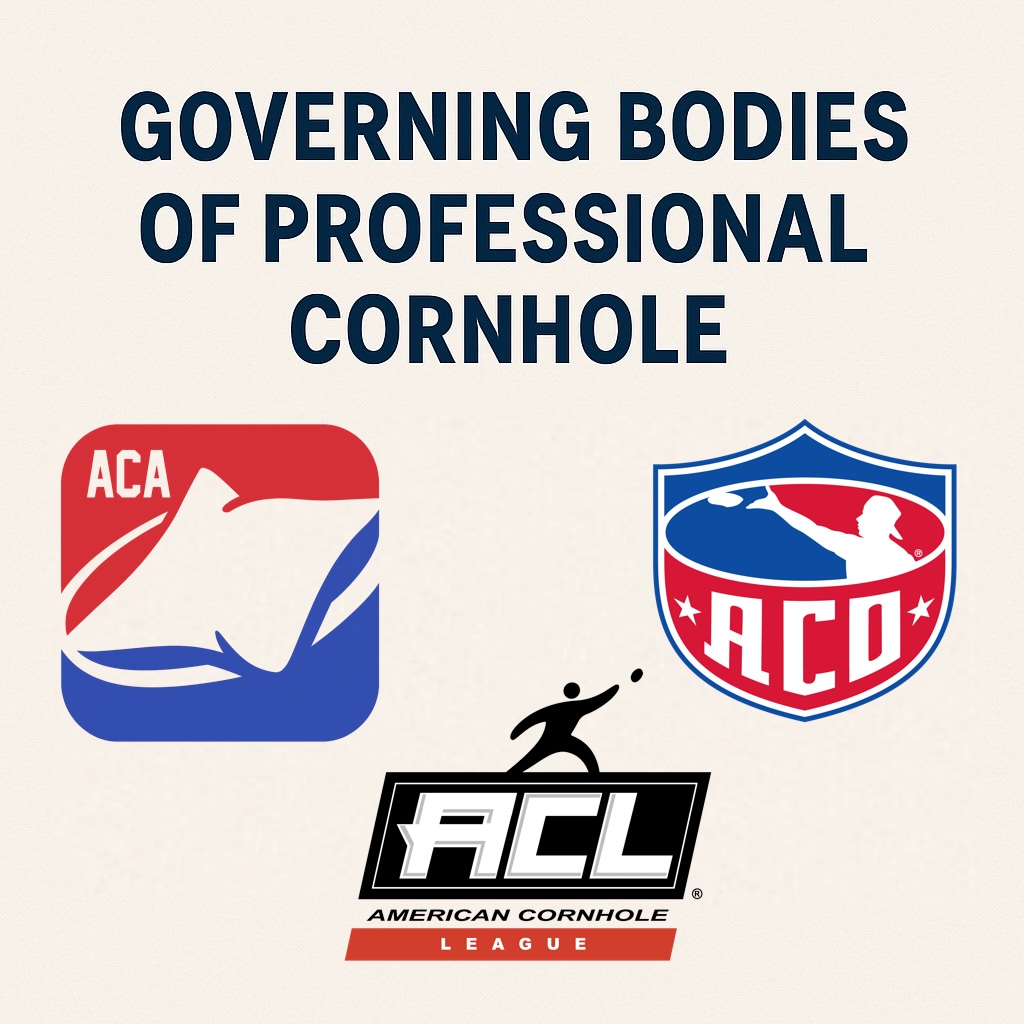Governing the Game: Comparing the Leading Bodies in Professional Cornhole

As cornhole transforms from a backyard pastime into a nationally recognized sport, several organizations have stepped up to govern, regulate, and promote competitive play. While each group shares the goal of growing the game, they differ in structure, strategy, and audience.
Here’s a breakdown of the three main governing bodies in the professional cornhole landscape: the American Cornhole League (ACL), American Cornhole Organization (ACO), and American Cornhole Association (ACA).
Shared Goals and Common Ground
All three organizations are built on a foundation of promoting organized play, standardizing rules, and elevating cornhole to a legitimate sport. They provide tournament structures, player rankings, and varying levels of competition to support players from casual hobbyists to seasoned professionals.
Each group also works to increase the sport’s visibility, with the ACL and ACO especially investing in media production, livestreams, and championship events to reach broader audiences.
American Cornhole League (ACL)
Founded in 2015, the ACL is the most high-profile governing body in professional cornhole today. Known for its slick branding, wide reach, and corporate sponsorships, the ACL has secured major television deals with ESPN and CBS Sports. Its season-long pro circuit attracts top-tier talent and offers a structured points system for ranking players across skill divisions.
The ACL has developed a comprehensive digital ecosystem, including an app for player stats, tournament registration, and standings. It also features divisions such as Pro, Open, and Junior, ensuring a clear developmental path for competitive players.
Notable Features:
- National Pro Circuit with media coverage
- Data-driven player ranking system
- Mobile app and digital infrastructure
- Collegiate and high school programs
American Cornhole Organization (ACO)
The ACO, founded in 2005, is the oldest of the major cornhole organizations. It emphasizes a traditional approach to competition, with a strong focus on community, regional clubs, and long-term player development. Its annual “Cornhole World Championships” is a marquee event, drawing players from across the country.
While the ACO may not have the same broadcast exposure as the ACL, it has cultivated a loyal base of players and hosts a well-defined seasonal format. The ACO’s rankings are based on points earned over a series of events in a given season.
Notable Features:
- Longest-running governing body
- Seasonal format with World Championships
- Community-driven, grassroots approach
- Strong regional presence
American Cornhole Association (ACA)
The ACA, established in 2003, markets itself as the original governing body of cornhole. While its public-facing platform leans more toward recreational and casual play, the ACA is influential in setting standardized rules and promoting cornhole as a family-friendly, accessible game.
Unlike the ACL and ACO, the ACA focuses heavily on equipment sales, DIY setups, and home play kits. However, it also offers league software and official rules, giving it a presence in community tournaments and amateur leagues across the country.
Notable Features:
- Focus on casual and amateur play
- Emphasis on equipment and home use
- Provides official rulebooks and scorekeeping tools
- Accessible for new players and families
Key Differences at a Glance
| Feature | ACL | ACO | ACA |
|---|---|---|---|
| Founded | 2015 | 2005 | 2003 |
| Focus | Professional competition | Grassroots & competitive play | Recreational & rule standards |
| Media Presence | High (ESPN, CBS) | Moderate (livestreams) | Low |
| Player Tiers | Pro, Open, Junior, Women’s | Multiple skill divisions | Primarily amateur |
| Event Structure | Points-based national circuit | Seasonal with World Champs | Local tournaments & leagues |
| Tech/Apps | Advanced digital tools | Limited digital tools | League management tools |
Conclusion
Whether you’re chasing a national title or just refining your backyard toss, there’s a cornhole organization for every kind of player. The ACL leads the way in professional exposure and innovation, the ACO champions a structured and community-rich competitive scene, and the ACA keeps things grounded in accessibility and tradition.
Together, these three governing bodies are shaping the future of a sport that’s no longer just for tailgates—it’s becoming a staple of competitive entertainment.
